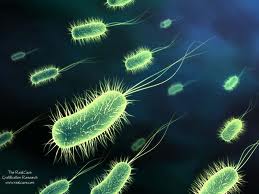Sources of resistance of different cotton genotypes against bacterial blight disease incited by Xanthomonas axonopodis pv. malvacearum under natural epiphytotics
Keywords:
Resistance, X. axonopodis pv. Malvacearum, Natural epiphytotics, CottonAbstract
Atotal thirty-six cotton genotypes were screened in replicated thrice withRandomized Block Design against bacterial blight disease incited by Xanthomonasaxonopodis pv. malvacearum under natural epiphytotics. Resultsrevealed that 3 genotypes showed moderately resistant, 31 showed moderatelysusceptible and 2 showed susceptible against bacterial blight of cotton. Disease severity at 60 DAS ranged from 2.42 to 27.5 per cent, PH 1009(2.42 per cent), Paig 29 (2.42 per cent) had shown lowest diseaseseverity. Disease severity at 90 DASranged from 9.63 to 58.6 per cent. NH633 (9.63 per cent) had shown minimum disease severity followed by PH 1062 (9.91per cent) and PH 1031 (10.37 per cent). Disease severity at 120 DAS ranged from 11.63 to 68.94 per cent. The lowest PDI was recorded by NH 633 (11.63%) followed by Paig 265 (13.26 %) and NH 637 (13.55 %). Mean disease severity(PDI) of cotton genotypes was recorded in range 9.71 to 51.68 per cent.References
Anonymous, 2009, www. cot corp.com
Atkinson, G.F., 1891. The black rust of cotton. Alab. Agric. Exp. Stn. Bull. 27, 1.
Cook, C.G., Namken, L.N., Scotto, A.W., Robinson, A.F., 1997. Notice of release of C 221-91, C224-91, C 300-91 and
C 306-91 germplasm lines of cotton beltwide-coton-confernces, USA, vol. 1, 493.
Hillocks, R.J., 1992. Bacterial blight. Cotton Diseases, pp. 39-85.
Khodke, S.W., Pawar, R.V., Moli, D.V., 2003. Screening of cotton genotype against Alternaria leaf spot and
bacterial blight. PKV Rs. J. 25(1), 63-64.
Mayee, C.D., Datar, V.V., 1986. Phytopathometry Technical Bull-I, MAU, Parbhani. 88-89.
Mishra, S.P., Krishna, A., 2001. Assessment of yield losses due to bacterial blight in cotton. J. Mycol. Pl. Pathol.
(2), 232-233.
Patil, M.R., Ghodere, B.N., 1998. Field screening of Israel hybrids against key diseases of cotton. PKV- Research
Journal, 22(1), 153-154.
Poswal, M.A.T., 1994. Variation for resistance to bacterial blight among different hybrid pools of cotton in Nigeria.
Act. Phytopathologca-et-Entomologica Hugarica. 29(1-2), 81-88.
Singh, A., Shrivastava, S.S.L., Akram, M., 2007. Studies on bacterial leaf blight of cotton. Int. J. Sustain. Crop Prod.
(3), 25-29.
Singh D. and Garg, H.R. (2002). Reaction of some upland cotton genotypes against bacterial blight caused by X.
axonopodis pv. malvacearum. Plant disease Research, 17(1): 74-75.
Singh, D., 2003. Screening of American cotton varieties against leaf curl and bacterial blight. J. Cotton Res. Dev.
(1), 576-58.
Srinivasan, K.V., 1994. Bacterial blight in cotton diseases., pp. 87-278.
Verma, J.P., Singh, R.P., 1974. Control of bacterial blight of cotton. Pesticides, 7(1), 16-17.
Verma, J.P., 1986. Bacterial blight of cotton. CRC Press, Florida, USA, pp. 278.

Published
How to Cite
Issue
Section
Copyright (c) 2013 G. P. Jagtap, A. M. Jangam, D. Utpal

This work is licensed under a Creative Commons Attribution-NonCommercial-NoDerivatives 4.0 International License.



